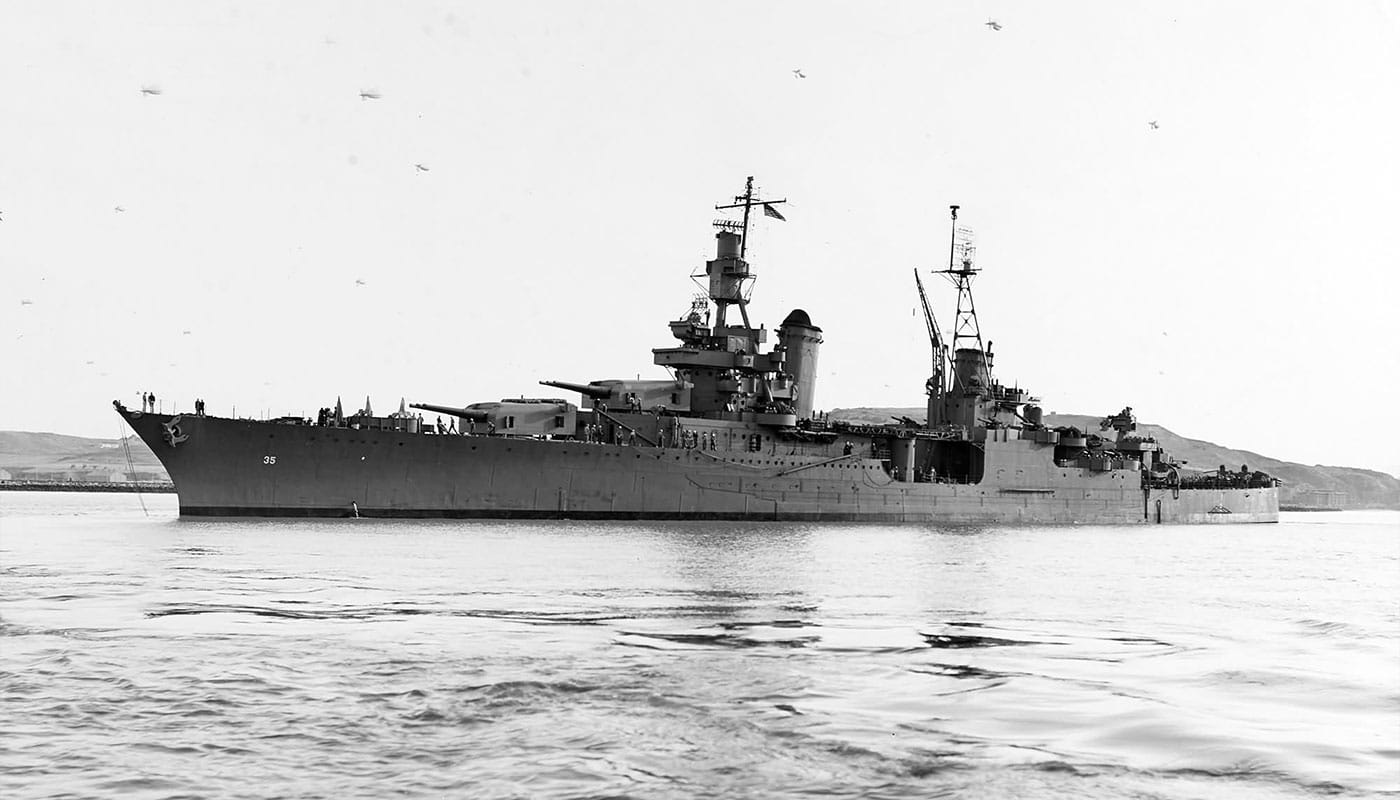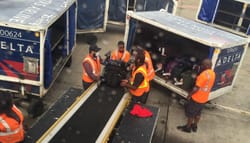On Saturday, September 19, philanthropist Paul Allen reported that he and a team of ocean explorers had discovered the wreckage of the USS Indianapolis in the Philippine Sea. The Portland-class cruiser of the U.S. Navy was sunk by a Japanese submarine more than 72 years ago, on July 30, 1945, in the closing weeks of World War II.
History of the USS Indianapolis
On July 16, 1945, the USS Indianapolis departed the Hunters Point Naval Shipyard in San Francisco, CA. Three days later, the ship made a quick stop at Pearl Harbor, Oahu, Hawaii. On a top-secret mission, Indianapolis sailed from Pearl Harbor to the island of Tinian, Guam, exposed and without an escort.
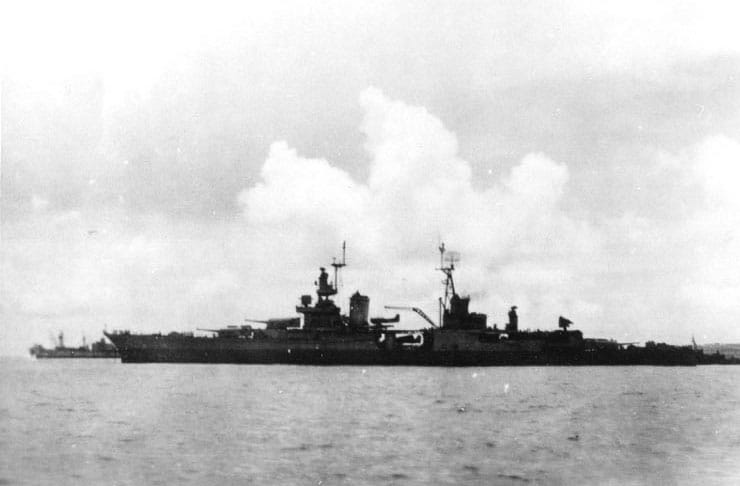
The ship’s top-secret mission was a delivery of parts for “Little Boy,” the atomic bomb that was dropped on the Japanese city of Hiroshima on August 6, 1945. Arriving in Tinian on July 26, the top-secret cargo was offloaded and the ship remained in port until July 28, when she set sail for the Philippine island of Leyte, unaccompanied once again.
At 12:14 a.m. on July 30, the USS Indianapolis was struck by two torpedoes fired by the Imperial Japanese Navy submarine I-58. The damage was severe, and the ship sunk within 12 minutes. The Indianapolis crew, numbering 1,196, had little time to evacuate the sinking ship, and many were left in the water without life jackets, lifeboats or provisions. Of the nearly 900 who made it into the water, only 317 would survive.
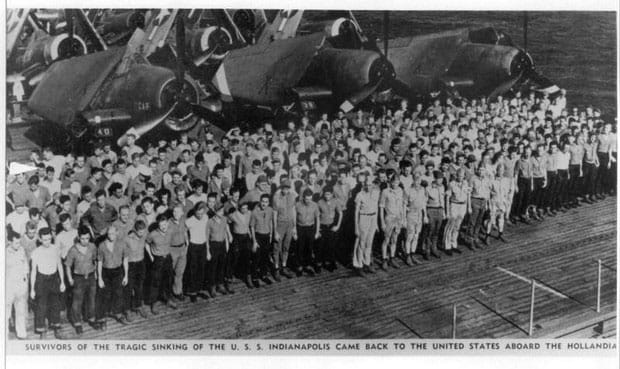
If the crewmen adrift in the Philippine Sea had not been mercilessly attacked by sharks, more would have survived. An investigation of the sinking revealed that three separate U.S. naval communications stations had received distress calls from the Indianapolis, but none had acted on it. Those responsible for tracking the ship’s movements had also not reported its missed arrival in Leyte on July 31. Survivors from the ship were not spotted until four days later, a factor which contributed to death of hundreds of sailors.
The tragic history of the ship and of the war is made clear in the closing scenes of the 2016 movie, USS Indianapolis: Men of Courage, starring Nicolas Cage. Because of copyright protection, I can’t share it here, but it is one of the most striking scenes I have seen in a mass market movie in years. The lines read:
I-58 Commander Hashimoto (Yutaka Takeuchi): “As a commander in the Imperial Japanese Navy, it was my duty to kill you. But as a man… I have regrets.”
Indianapolis Captain McVay (Nicolas Cage): “I had a good idea of what we were carrying. I, too, did my duty. But as a man… I find no honor in it.”
USS Indianapolis Memorial
Last year, during a trip to Indianapolis, Indiana, I had the opportunity to visit the USS Indianapolis Memorial. It is located along the city’s Central Canal walk. Dedicated in 1995, the memorial is open 24 hours a day and it is wheelchair accessible.
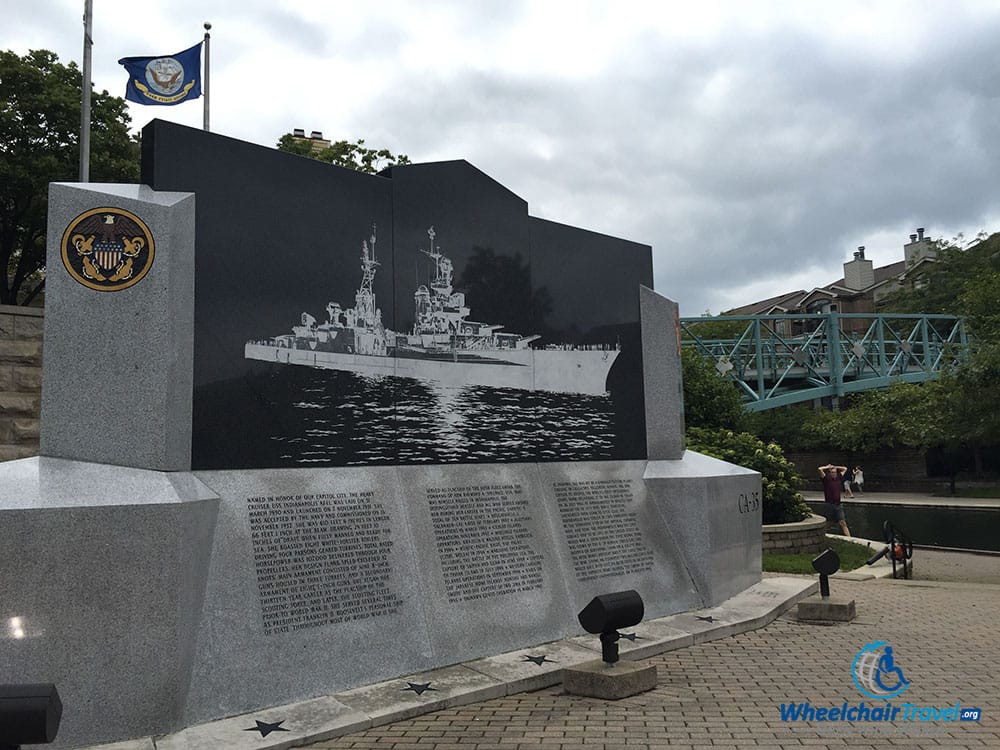
The names of the crewmembers’ are inscribed on the limestone monument, with a notation for those who lost their lives. If you are ever visiting the city, I encourage you to visit and pay your respects to the sacrifice of these sailors. For more information on the ships history and that of its crew, see www.ussindianapolis.org.

